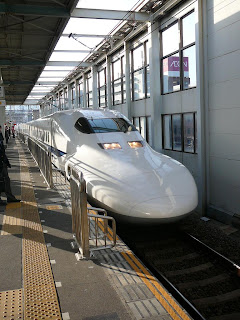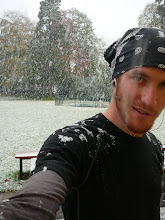Only a few buildings survived the enormous blast equivalent to around 14 to 16 kilotons of TNT caused by the detonation of the bomb, codenamed Little Boy. Amazingly, all of this death and destruction was produced by a mere 600 milligrams of Uranium-235.. Less than a gram!
The A-Bomb dome, situated on the bank of the Motoyasu-gawa river, is considered to be the symbol of the destruction of Hiroshima as nearly directly above (about 160m to the southeast of) what was then the Hiroshima Prefectural Industrial Promotion Hall is where the bomb detonated. The blast created shockwaves that eminated from this point 600m above the ground, crushing almost everything within a few kilometres. Because the shockwaves came from above, however, the walls of this building were spared and the original dome, although obviously damaged, remains still intact today.
Today the city is back to full speed, new buildings, new lifestyles, but the memories live on. The Hiroshima Peace Memorial Park, where children send thousands of folded paper cranes every year in memory of the children that died as a result of the A-bomb, is extremely touching. The monument here was originally inspired by the death of Sadako Sasaki, a 12 year old school girl who died of leukemia after being exposed to the bomb's radiation at the age of 2. She decided to start folding 1000 paper cranes - an ancient Japanese custom through which it is believed that one's wishes will come true - at the age of 10 when she developed the illness with the wish that she would recover. Her efforts failed and she died before reaching her goal. Her classmates folded the rest. The Memorial Mound within the park, a hill created from the ashes of tens of thousands of victims, also invokes dark emotions.
The Peace Memorial Museum has a wonderfully detailed (or not so wonderful, really) account of the events of the 6th of August, along with documents from US military personnel explaining the methods and decisions that lead to the bombing - there is even a letter or two from top scientists of the time, including one urging the US to develop the weapon, signed by Mr. Einstein. Stories and photos of both survivors and victims line the walls.
Also nearby Hiroshima, and a little more light-hearted in nature, is the island of Miyajima. It is home to one of the most photographed attractions in Japan, the famous 'floating' torii - a huge gate situated in the harbour, which at high tide appears as if it is floating on water. We spent a couple of hours on this mountainous and thickly forested island, following the shoreline and meeting some of the locals: there are friendly deer here who seem to have been desensitised to humans and so are happy to lounge about on the paths while people walk by or get a few quick photos with them.
In the afternoon of the 11th of April, we took the fastest bullet train (shinkansen in Japanese) from Hiroshima to Osaka. I had been excited about taking a bullet train for ages, however it wasn't as interesting as I had anticipated. It did go fast, around 300km/h, but about half of that time was spent in tunnels, blind to the environment around us, and so we felt as though we weren't really getting the full experience and that we in fact enjoyed the local trains much more. It's definitely something you have to do if you come to Japan though..
Photos:
one of the many watches that have remained still since the bomb fell
the A-bomb dome
the devastation, with the A-bomb dome centre-right
on Miyajima
Manga cafes - so comfortable
Paper cranes
is it a bullet?









1 comment:
Wow! How sad what the human race does to each other. They are all as bad as each other. It is going on all over the world still. Thanks for your blog Paul.
Post a Comment